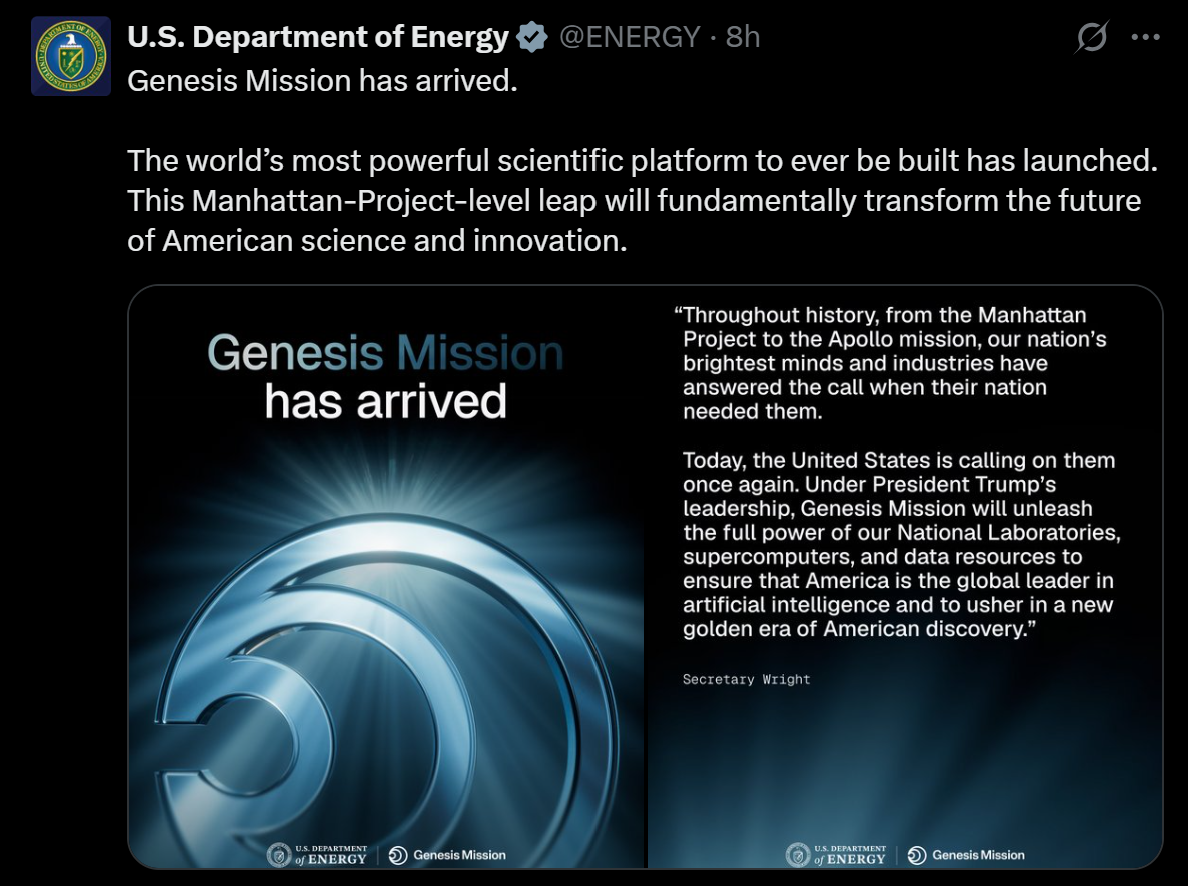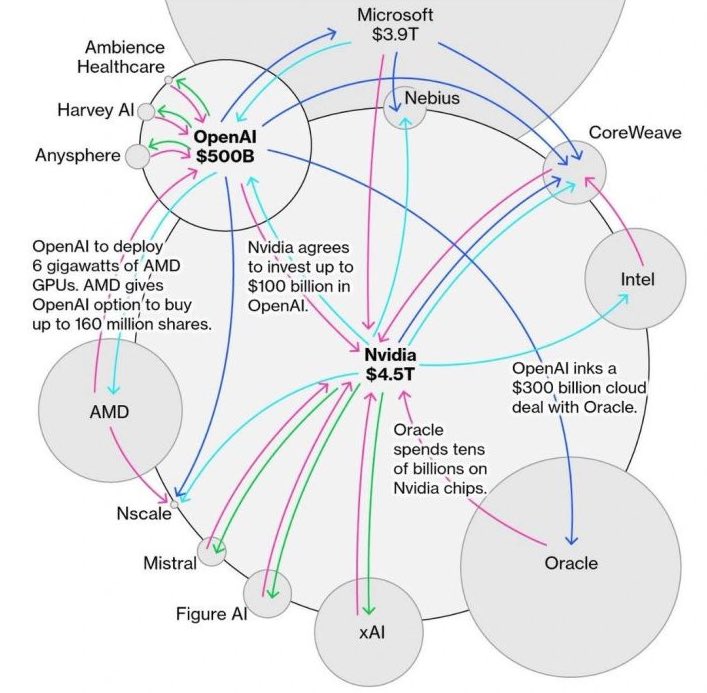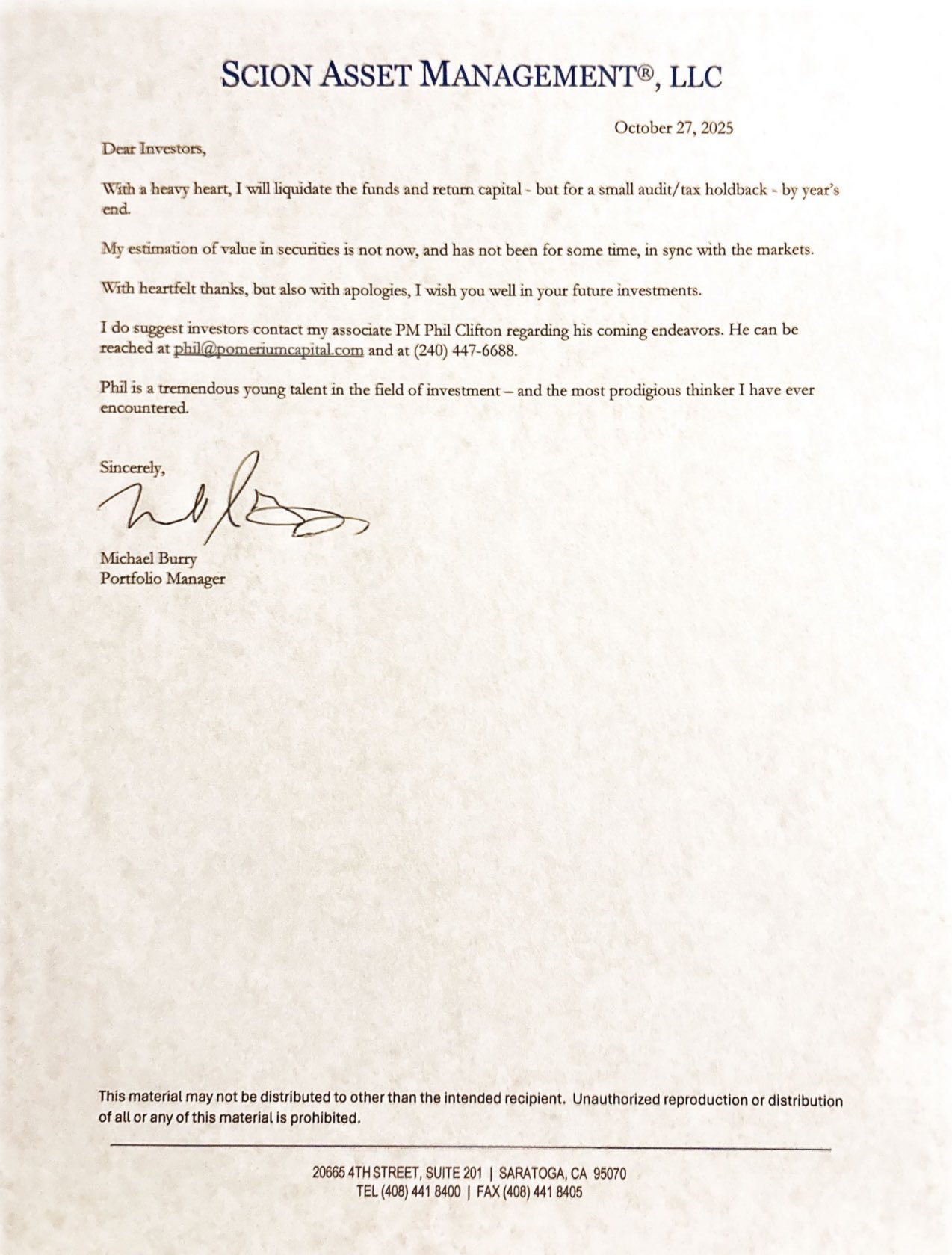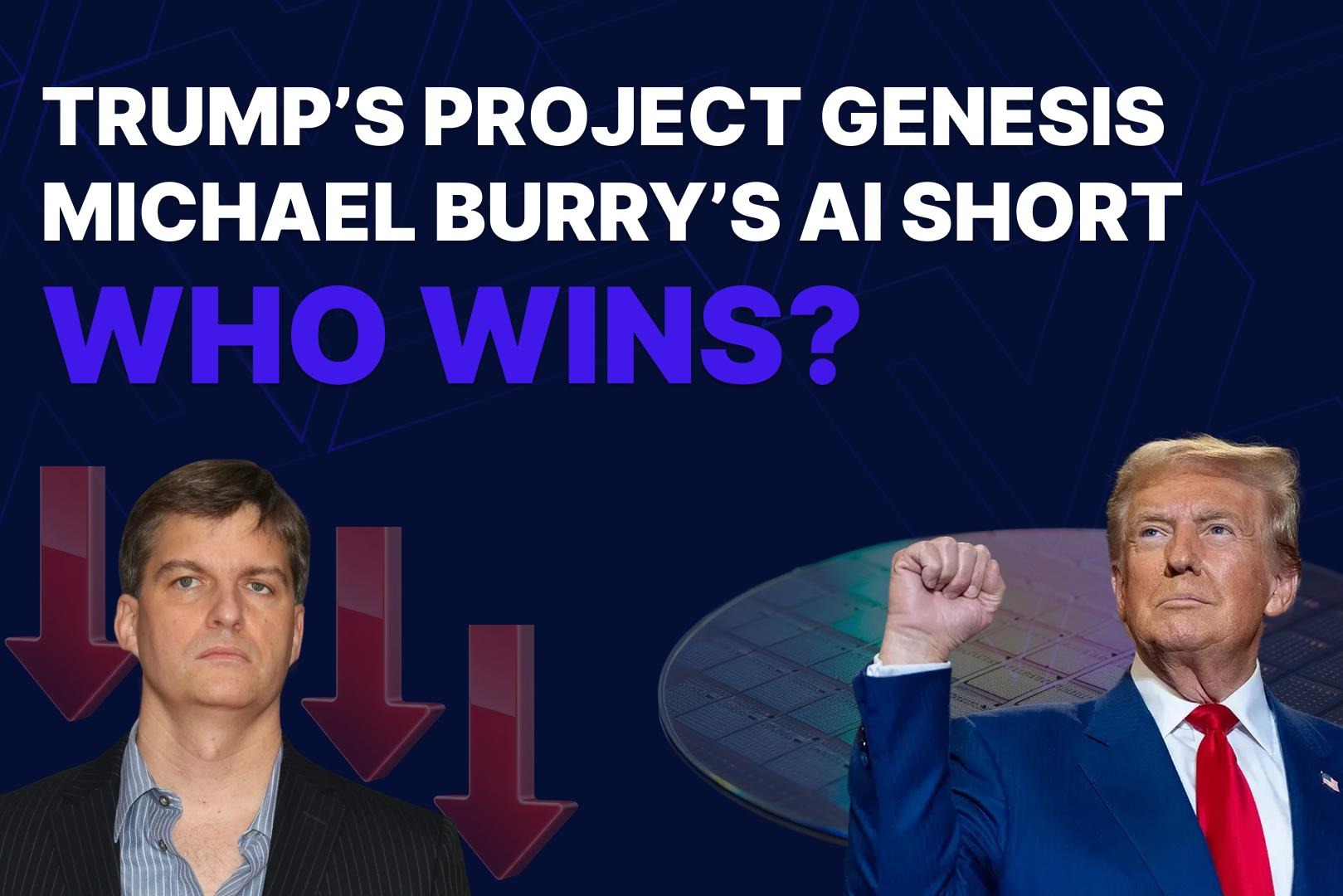Trump’s Project Genesis vs. Michael Burry’s AI Bubble Bet: Who Wins?
Trump’s Project Genesis vs. Michael Burry’s AI Bubble Bet: Who Wins?
On November 24, 2025, former President Donald Trump signed an executive order launching Project Genesis — a national-scale program aimed at cementing U.S. dominance in artificial intelligence (AI). The project is billed by Washington as a Manhattan Project-level initiative designed to double American scientific productivity in a decade by hooking up national lab supercomputers, federal datasets, and private AI tools into one massive AI innovation engine.

Sounds impressive. But here’s the kicker: AI stocks were already screaming bubble before Genesis dropped — what many call a “circle jerk” of hype, capital, and handoffs between a tight cluster of companies. Then there’s Michael Burry, the legendary contrarian who nailed the housing crash and just massively bet against AI stocks. Now, he’s shutting down his hedge fund, saying he doesn’t even understand these “fucked up” markets anymore. And Palantir (PLTR), one of his key shorts, is down while he’s up on the trade.
So what the hell just happened? Did Trump’s Project Genesis blow up Burry’s bet, or did it shove the AI bubble into a high-risk, unstable overdrive? Let’s unpack this shit.
What the Hell is Project Genesis?
Project Genesis is basically Washington’s huge bet that AI is the future and the U.S. better damn well lead the race. The Department of Energy is spearheading the effort, linking supercomputers at national labs with government datasets and private-sector AI technologies.
The goal? To supercharge research in biotech, critical materials, nuclear tech, quantum computing, microelectronics — the kind of cutting-edge shit that shapes global power. The White House openly calls it a “Manhattan Project-level effort” to double U.S. science impact within ten years.
This means massive government spending on AI infrastructure, hardware, software — a guaranteed, never-ending customer for key AI companies like Nvidia, Palantir, Microsoft, and others. Suddenly, the U.S. government itself becomes a giant buyer and validator of the AI complex.
The AI Bubble: A $1 Trillion Circle Jerk
Before Genesis, the AI stock market was already on steroids. Nvidia sells the GPUs that power AI models and trades at insane multiples — 230 times earnings or more. Palantir, with a $35 billion+ market cap, trades north of 250 times earnings, despite failing to show solid profits. Then you have cloud giants like Microsoft and Amazon pumping billions into data centers and AI platforms.
Here’s how the so-called “circle jerk” works:
1. Cloud and software companies buy tons of Nvidia chips.
2. AI startups and platforms rent or buy that compute to create AI services.
3. Governments and corporate clients buy AI services.
4. Rising stock prices make raising capital super easy.
5. Companies spend that capital on more hardware and AI research.
6. Stock prices climb further because nobody wants to miss the AI train.

It’s a self-reinforcing feedback loop where valuations have become untethered from actual earnings or realistic business fundamentals. This isn’t investment — it’s hype and momentum piled on hype and momentum.
Michael Burry’s Bet: The AI Short in Depth
Michael Burry, the contrarian investor made famous by The Big Short, made one of the boldest moves in 2025 by betting massively against the AI stock boom. His firm, Scion Asset Management, filed regulatory disclosures showing enormous put option positions—essentially bets on the AI market crashing—against two of the sector’s poster children:
.jpeg)
- Palantir Technologies (PLTR): Burry acquired puts representing roughly 5 million shares with about $912 million in notional exposure. Palantir provides AI-driven data analytics platforms primarily to governments and large enterprises and has been one of the most hyped AI stocks.
- Nvidia (NVDA): He also held puts for approximately 1 million shares, with $186–$187 million notional exposure. Nvidia is the dominant supplier of GPUs powering AI computations worldwide.
Together, these put positions accounted for about 80% of Scion’s reported portfolio, meaning Burry was all-in against AI’s biggest players.
Burry’s rationale? He claimed these companies are artificially inflating their earnings through aggressive accounting. Specifically, he argues that the AI sector is stretching the useful life of expensive AI hardware—servers and GPUs—from the realistic 2-3 years to 5-6 years. This defers costs and inflates profits on paper by an estimated $100 billion through 2028.
At sky-high valuations—Palantir trading north of 250 times earnings, Nvidia around 230—this built an enormous bubble that Burry predicted would eventually burst. His short position wasn’t a typical hedge; it was a high-conviction bet that the “AI trade” was overhyped and fundamentally flawed at its core.
As of late 2025, Palantir’s stock pulled back 20-25% off its highs, confirming some of his thesis. Nvidia’s price held up better, buoyed by strong earnings, but the risk exposure remains significant.
But Wait — Burry Is Shutting Down His Fund?
In October 2025, just as his bet was gaining attention, Burry announced he was liquidating Scion Asset Management and returning capital to investors. His message was clear: “The market’s estimate of value is not in sync with reality.”

He said he no longer understood how to value these “fucked up” markets driven by momentum, hype, and aggressive government action. Instead of fighting it with a hedge fund, he’s pivoting to a paid newsletter, Cassandra Unchained, where he’ll continue warning about market excesses from the sidelines.
In others words, Burry was right about the bubble, but the timing and market madness forced him to walk away rather than double down on a trade that could get even crazier before it crashes.
So, Did Project Genesis F**k Burry’s Trade or Fast-Track the Bubble Pop?
Now that the government is throwing massive AI capital behind Project Genesis, things get messy.
Scenario 1: Genesis Kills the Bubble
If Genesis creates a steady, reliable stream of government contracts and real demand, it could legitimize the entire AI sector’s valuations. More spending means stronger earnings, which means current prices aren’t so nuts after all.
Projects involving biotech, quantum computing, and nuclear tech could create genuinely transformative AI applications. If that happens, Burry’s bet looks premature, and he shut down the fund just before a new AI supercycle kicks off.
Scenario 2: Genesis Pumps the Bubble Beyond Control
On the flip side, pouring public money into an already overheated market might just inflate the bubble. It compounds speculative fervor, makes investors assume the government will forever backstop AI investments, and amplifies fragile feedback loops.
That makes the eventual crash worse, more catastrophic. The market might run dry on new buyers when the music stops, and lots of overvalued companies could tank.
What Should Investors Think?
Right now, Palantir is down a bit, so Burry’s bet looks solid at least short-term. But the high-profile government backing means nobody can ignore the AI megatrend’s power.
The truth lies somewhere in between: Genesis will likely boost fundamental demand and lend some credibility to the AI space. Yet, valuations are insane, and the speculative mania remains in full swing.
If you’re playing this market, be ready for wild swings — the bubble might inflate further before it bursts, or it might slowly evolve into something sustainable.
Bottom Line
Trump just pumped the AI even bubble even bigger with Project Genesis, turning the AI sector into a political and economic juggernaut. Michael Burry got out of the hedge fund game, betting the AI bubble bursts any second, but now the government bet throws a wrench in his grand plan.
Is this the beginning of a new era for AI technology and U.S. global leadership — or the final straw that shoves an already unstable bubble into a catastrophic crash? Time will tell. But one thing’s for sure — the AI game just got a hell of a lot more interesting.
Analysis based on industry valuations, government announcements, and investment flows as of late 2025.
Not financial advice - do your own dd.






